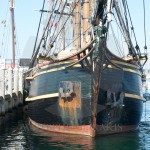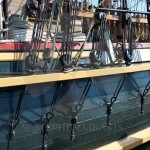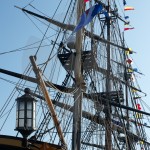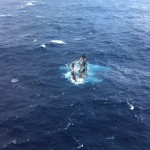NEWPORT HAS BEEN CHOSEN AS A STOPOVER FOR THE NEXT VOLVO OCEAN RACE.
(February 4, 2013; Day 87) – The Vendee Globe welcome afforded to fourth
placed Jean-Pierre Dick by a huge and passionate crowd was one worthy of a
race winner. Having sailed more than 2500 miles with no keel, having lead
the race – his third participation – and having been among the top three
for most of the course, all clearly inspired a big, partisan crowd to take
to the channel into the heart of Les Sables d’Olonne this afternoon to
welcome ‘ JP’.
As one of the pre-race favourites, JP took his disappointments in his
stride but they ultimately took their toll on his overall performance.
First was the loss of a key small gennaker – one which would have been his
reaching workhorse in the South which forced him to re-think his strategy
at times. Then he struggled with a jammed halyard hook which left him
unable to set the optimum headsail for some time. He eventually climbed the
mast of Virbac-Paprec 3 several times to free it but lost more miles. His
problems were capped when he lost his keel on the evening of January 21.
“The welcome here has been extraordinary. That transition between being
alone and arriving here makes me so proud to be here. You are a racer at
heart. I left trying to win this race, but it changed course and became an
adventure. In sporting terms, the goal was not achieved, but in human
terms, it is much more than I could have hoped for. I think that it will be
easier for me to get over the loss of my third place, because there is this
glorifying side to the end of the race. I am proud to have brought back my
Virbac-Paprec 3 to Les Sables d’Olonne.”






